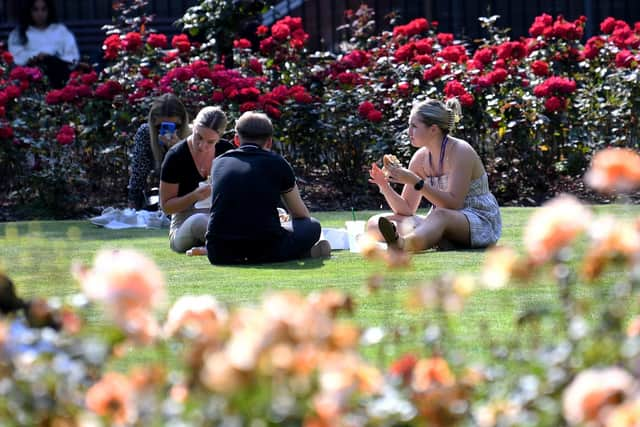Increase in number of Local Green Spaces in Yorkshire and The Humber


CPRE, formerly known as the Council for the Preservation of Rural England, has today published the most recent of its annual Local Green Spaces Report, which examines the state of LGSs in England each year.
Of the 771 new spaces designated as LGSs since 2022’s report, 171 can be found in Yorkshire and The Humber. An increase of 43 per cent in the region.
Advertisement
Hide AdAdvertisement
Hide AdLGSs are protected areas of land, similar in legal status to the Green-Belt, but usually smaller. They were introduced in the National Planning Policy Framework in 2012 as a way to ensure the survival of green spaces which are valued by local communities.
The framework says the LGS designation should be used where green space is in close proximity to the community it serves, holds particular local significance, and is local in character and not an extensive tract of land. Each LGS is designated as such by local authorities in their local or neighbourhood plans.
There are 7,286 LGS spaces in England, chosen for various reasons including recreational value, beauty and importance to wildlife.
Despite an increase in the number of protected spaces in deprived areas, the report shows deprived areas are less likely to have LGSs, which leaves green spaces vulnerable to development.
Advertisement
Hide AdAdvertisement
Hide AdBrad Taylor, lead author on the report, said: “Communities with high levels of deprivation need to have their voices heard and their Local Green Spaces protected. People must be empowered to engage in the local and neighbourhood planning process that can secure LGS designations.”
While Yorkshire and The Humber saw a huge increase in the number of designated LGSs in the region since last year, this year’s report uses Hull as a case study to highlight how the framework is applied differently by different local authorities.
The city is the second largest in England to not be surrounded by a Green Belt, and despite being home to more than 100 parks, Hull has zero LGS designations.
A survey of residents undertaken for the report showed a third of people in Hull wanted control over planning for parks and green spaces, but that 57 per cent of people hadn’t heard of the Hull Local Plan - a document produced by the council outlining planning and development strategy in the city until 2032.
Advertisement
Hide AdAdvertisement
Hide Ad“Whilst it is evident that local people in Hull cherish their green spaces, there is a clear disconnect between community sentiment and active participation in their protection,” says the report.
“Encouraging civic awareness and emphasising the need for LGS designations ahead of the upcoming review of the local plan will prevent green spaces from falling victim to growing plans for development in Hull.”
Brad Taylor concludes: “Our green spaces are there for everyone to enjoy – everyone needs to be involved in deciding how to protect them.”
Comment Guidelines
National World encourages reader discussion on our stories. User feedback, insights and back-and-forth exchanges add a rich layer of context to reporting. Please review our Community Guidelines before commenting.
